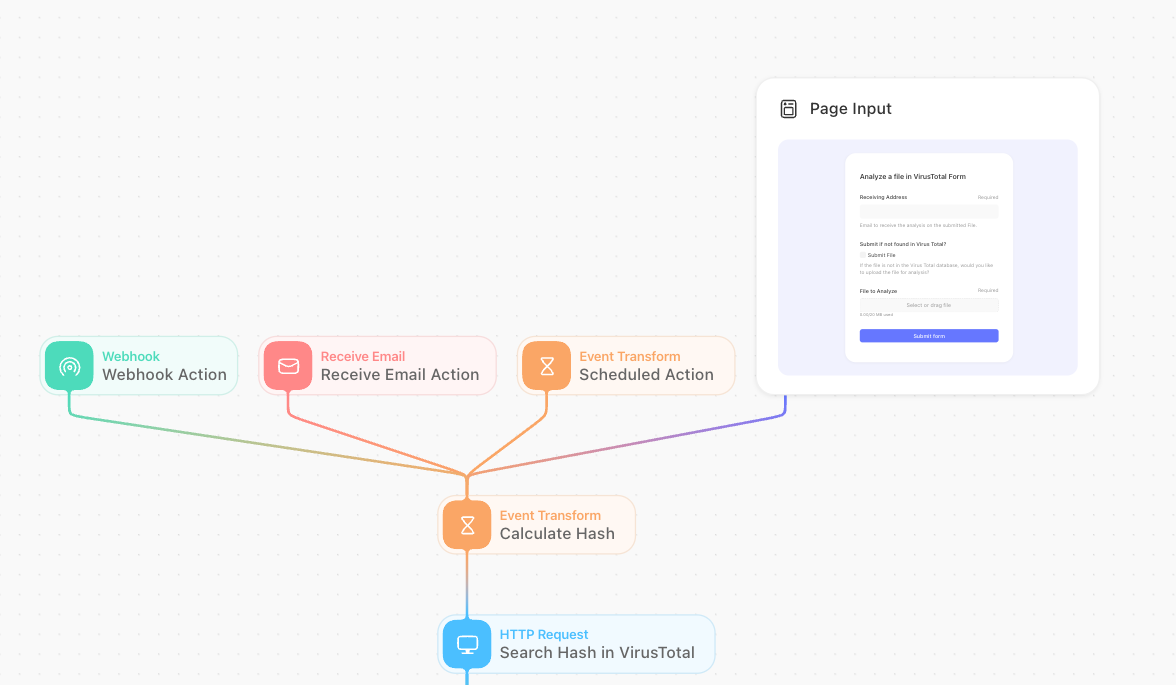In this module, we will quickly examine how a story may start and the possible actions used.
Starting a story in Tines
All stories in Tines must have an initial action that kicks off the automation. There are a few ways to start a story:

With the webhook action
Here you are waiting for data to come in from another source to start the story. For example, a webhook from an external service.
Example: Anytime a ❓ is added to a message in Slack, it sends a webhook notification to Tines to kick off a story.
With the receive email action
An email can be received to start the story's first action.
Example: Whenever an email is sent to a designated email address, it lets Tines know to kick off a story.
Scheduling actions
An action can be scheduled to run periodically, starting the story's automation on a time-based interval.
Example: At 9 am every Monday, kick off the story to find out who is on PTO this week and notify the team.
Page input
Using a page as a landing spot for people to be able to submit requests. Including a variety of inputs like text and files.
Example: When someone needs help from the IT team with a technology issue, they submit their email, select the subject of the request, and put in the details. This kicks off the request and notifies the IT team.
With an event transform or HTTP request action
The output of an event transform (if using your story as an API / send to story), or HTTP request action can pass data to the first action in a story, starting the automation. This is typically with the send-to-story action, as it waits to be called from other existing stories, and is a repetitive task that can benefit from multiple use cases.
Example: This story waits to get an email address from other stories, and once it receives it, it will go through and check to see if that user exists in Salesforce. This story is a send-to-story and gets kicked off whenever another story needs a user checked from Salesforce.